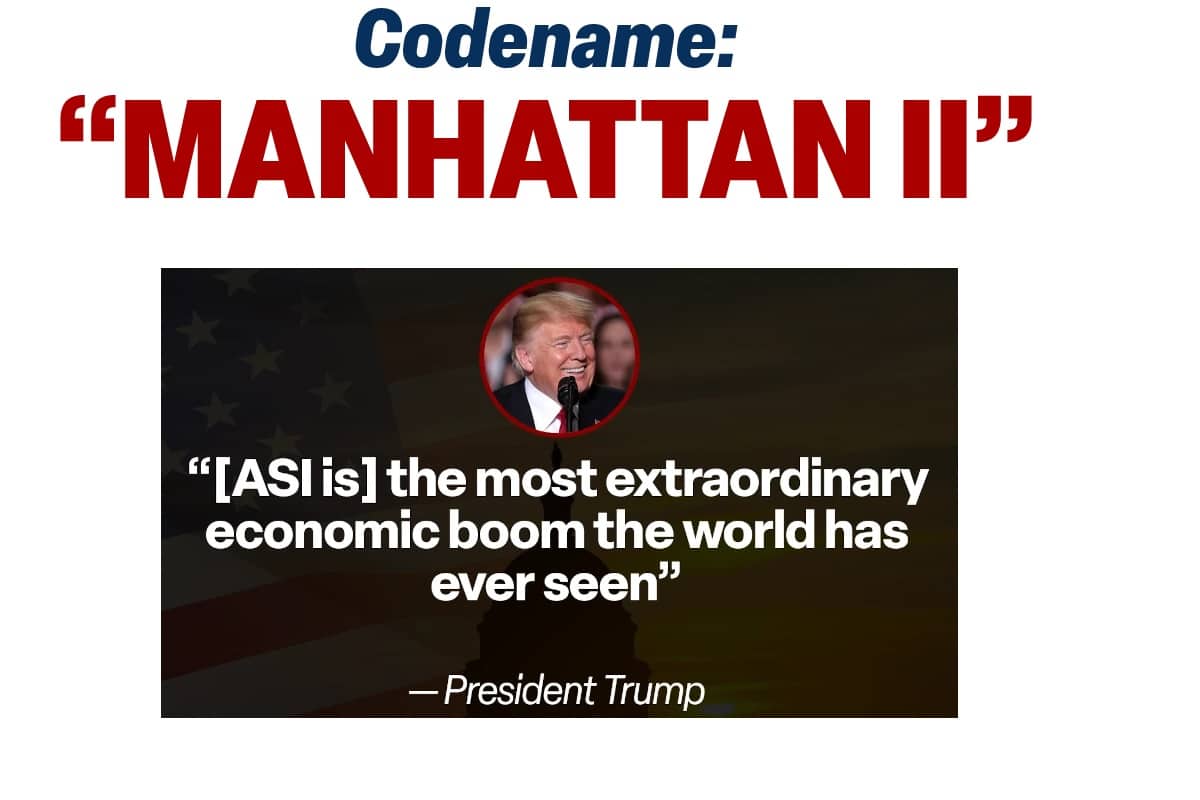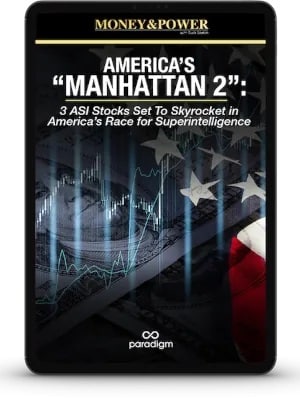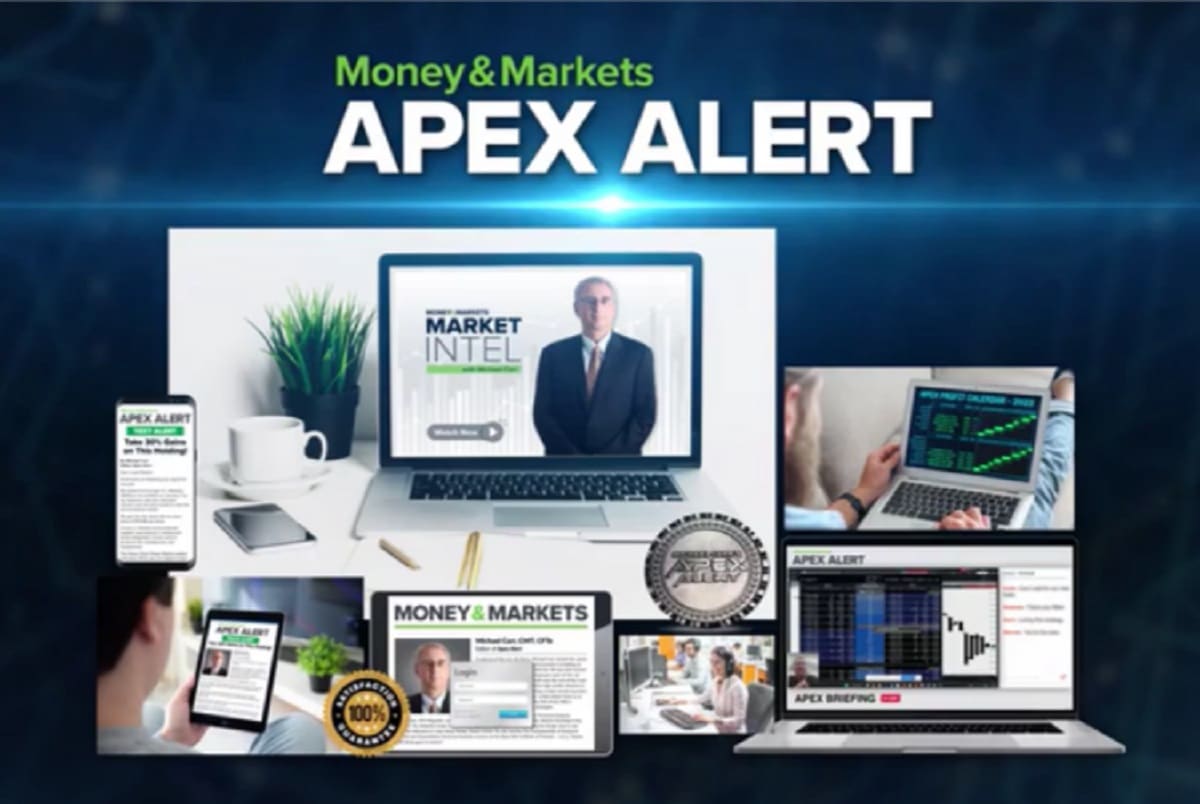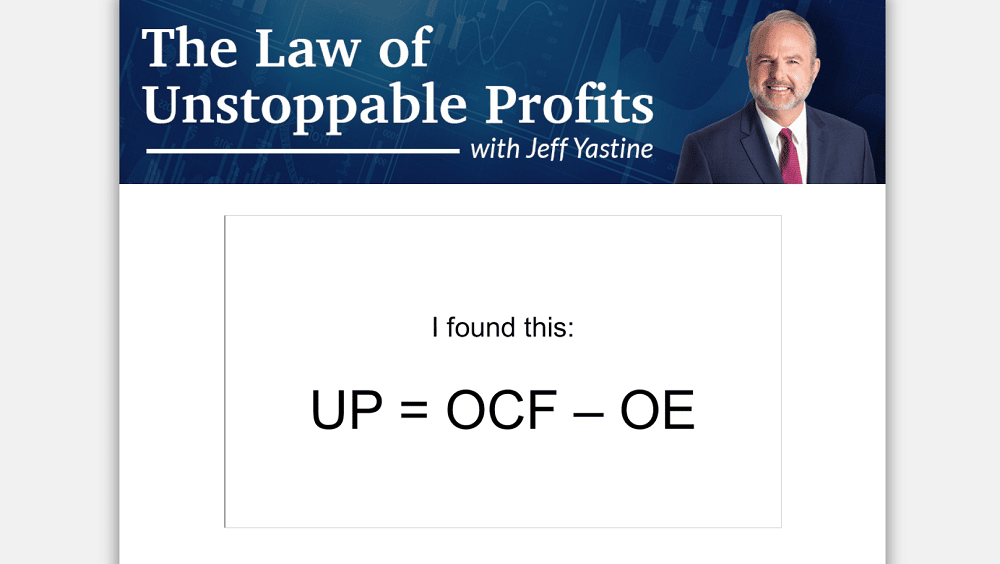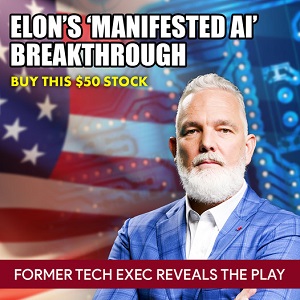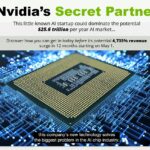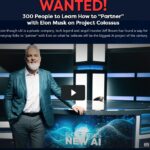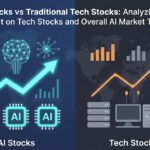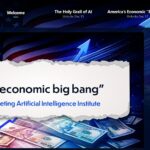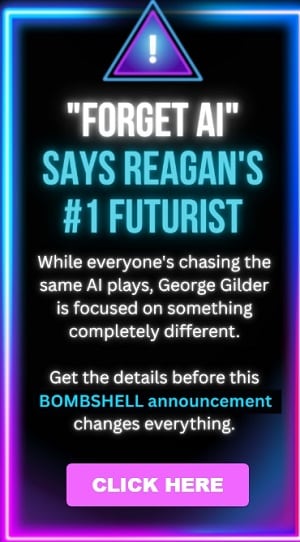Discover how the U.S. “Manhattan 2 Project” is shaping the $2.2 trillion AI race — and which companies could benefit from this government-led push.
Key Takeaways
-
The Manhattan 2 Project refers to America’s full-scale push to dominate artificial intelligence, mirroring the urgency and scope of the original Manhattan Project.
-
This initiative involves $2.2 trillion in projected funding for AI infrastructure, defense tech, semiconductors, and energy efficiency.
-
Investors who understand where Washington’s money is flowing could identify the next generation of market leaders early.
-
According to Buck Sexton’s Money & Power, three specific companies could be the biggest winners of this AI Superpower Race.
The New Arms Race Has Already Begun
In the 1940s, America faced a moment of existential pressure. Nations were racing to build a weapon that could change history — the atomic bomb. The U.S. mobilized its brightest minds, spent billions, and unleashed the Manhattan Project, forever altering global power.
Fast forward to today — and another government-led race is underway. But this time, the weapon isn’t nuclear. It’s digital. It’s artificial intelligence (AI).
And according to Buck Sexton, host of Money & Power, the U.S. government’s latest tech initiative — what experts are calling the “Manhattan 2 Project” — could reshape the economy, the markets, and even national security.
This time, the goal isn’t just to win wars. It’s to win the future of intelligence itself — how decisions are made, industries run, and power distributed across the planet.
And once again, billions — soon trillions — in government funding are being deployed to make sure America leads.
What Is the “Manhattan 2 Project” — and Why It Matters
The term “Manhattan 2 Project” isn’t a government codename; it’s a metaphor for scale and urgency. It captures the sheer magnitude of what the U.S. is undertaking — a national mission to outpace China and other rivals in artificial intelligence, quantum computing, and next-gen energy systems.
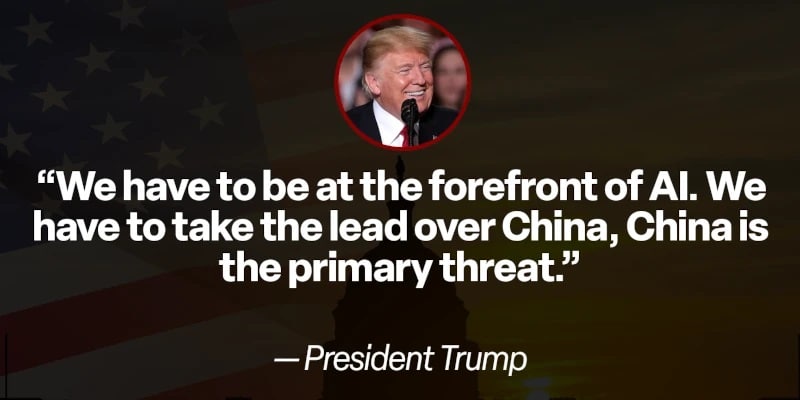
In the same way the original Manhattan Project united physicists, engineers, and the military, this new effort unites tech innovators, defense contractors, and Washington policymakers.
The AI Superpower Race
Today’s arms race is for AI supremacy. Every major world power understands that whoever controls advanced AI models controls the next century of economic and military dominance.
From autonomous drones to predictive logistics and real-time battlefield analytics, AI is now the new nuclear edge.
Washington knows it. Beijing knows it. Silicon Valley knows it.
That’s why the Biden administration has launched over 20 new federal AI initiatives across the Department of Defense, Department of Energy, DARPA, and the National Science Foundation.
The goal: to build a “national AI ecosystem” that combines public funding with private innovation — essentially creating a trillion-dollar public-private tech accelerator.
And this initiative has already begun reshaping markets.
How Washington’s Funding Amplifies AI Breakthroughs
The Power of Policy-Driven Profit
When Washington writes checks, markets move. Federal contracts don’t just spark innovation — they create entire supply chains.
Consider what happened after the original Manhattan Project:
-
It birthed the nuclear power industry.
-
It revolutionized materials science.
-
It led to the creation of national labs and decades of government-backed R&D.
Today’s Manhattan 2 Project could have similar ripple effects across:
-
Semiconductors (chips powering AI)
-
Cyber defense
-
Green data infrastructure
-
Machine learning software platforms
-
Defense and surveillance systems
Government Money + Private Innovation = Exponential Growth
The CHIPS and Science Act, for example, has already unlocked $280 billion in funding to rebuild U.S. semiconductor dominance. The Department of Defense recently announced $1.8 billion in AI modernization grants. And the Department of Energy has earmarked tens of billions for AI-based energy grid automation.
For investors, this is not just stimulus — it’s strategic direction. Washington is choosing winners — not by name, but by sector. And if you know where those funds are flowing, you can position yourself ahead of the capital wave.
That’s where Money & Power comes in.
Buck Sexton’s team tracks the intersection of Washington, Wall Street, and global tech — identifying the small, agile firms most likely to win government contracts or ride these megatrends first.
The Potential Winners: From Semiconductors to Defense and Software
1. Semiconductors: The Backbone of AI
You can’t train AI without chips. And with global demand for GPUs, data-center silicon, and neural processors exploding, chipmakers are at the epicenter of this boom.
While giants like NVIDIA and AMD dominate headlines, Washington’s Manhattan 2 push is funneling billions into smaller, lesser-known suppliers critical to the defense and energy sectors.
These firms don’t get the press — but they often get the contracts. And that’s where early investors can capture outsized gains.
2. Defense Tech: Where AI Meets Security
From autonomous drones to battlefield simulations, the Pentagon is now investing in AI systems that make decisions faster than humans.
Think of Anduril Industries — a startup now valued in the billions — or smaller listed firms working on defense-grade sensors, target recognition, and cyberwarfare AI.
The defense sector is about to experience a renaissance driven by machine learning, automation, and predictive analytics.
Investors who understand which companies sit at the intersection of AI + defense procurement could see long-term, compounding returns.
3. AI Software & Data Analytics
AI doesn’t just live in chips — it lives in the algorithms that interpret massive datasets. Government agencies are spending heavily on platforms that can:
-
Detect cyber intrusions
-
Model infrastructure vulnerabilities
-
Optimize supply chains
-
Manage national energy efficiency
The result? A tidal wave of opportunity for firms building applied AI solutions — especially those that can pass government-level security clearances.
Why This AI Era Is Different — and Riskier to Ignore
In every previous tech revolution, investors had years to catch up. In AI, that window is closing fast.
Unlike the 1990s internet boom, where public adoption was gradual, AI adoption is exploding simultaneously across industries.
From defense and energy to retail and healthcare, AI is now mission-critical infrastructure. That means it’s not just tech companies that will benefit — it’s the entire supply chain feeding them.
Ignoring the Manhattan 2 Project is like ignoring the internet in 1995 — or mobile computing in 2007. Except this time, the speed of progress is exponential.
Investors who hesitate risk missing the most powerful wealth transfer of the decade.
Where to Look Next — and Why Timing Is Everything
Government spending cycles are predictable. When new defense and AI budgets pass, contracts get awarded — and stock prices often react within days.
That’s why having a research advantage matters.
Buck Sexton and his team at Money & Power use forensic financial analysis, Washington policy tracking, and real-time AI market signals to identify:
-
Which sectors are positioned to surge
-
And when to act — before the mainstream financial media catches on
This is not about hype. It’s about precision timing based on verifiable capital flow.
Discover the 3 Companies Driving the Manhattan 2 Project
Right now, Buck Sexton’s Money & Power research is spotlighting three specific companies poised to gain from the Manhattan 2 Project — firms operating directly in the AI defense, semiconductor, and analytics ecosystems.
These aren’t speculative bets. They’re strategically aligned with Washington’s next trillion-dollar push.
If you want to understand how to position before the next round of AI funding announcements —
👉 Go here now to see how Money & Power tracks these breakthroughs.
Timing matters.
Because in every major tech revolution — from nuclear to internet to AI — the biggest winners were the ones who got in early, when the government money started flowing.
FAQ: The Manhattan 2 Project and AI Investment
Is the Manhattan 2 Project an official government program?
Not officially by that name — it’s a popular term used to describe the U.S. government’s full-scale mobilization around AI and advanced tech funding. It reflects the historical parallel to the original Manhattan Project’s urgency and scope.
Why is Washington investing so heavily in AI now?
AI has become critical to national defense, cybersecurity, and economic competitiveness. Rival nations like China are accelerating their own AI development, forcing the U.S. to respond with strategic funding and industrial partnerships.
How can individual investors participate in this trend?
By focusing on publicly traded companies aligned with government-backed initiatives — especially in semiconductors, defense tech, and AI analytics. Services like Money & Power help pinpoint these opportunities early.
Isn’t AI already overhyped?
Yes, mainstream narratives are loud — but government contracts and infrastructure spending represent real, tangible capital flows, not hype. The companies tied to those contracts often outperform broader tech markets.
Why trust Buck Sexton’s Money & Power for guidance?
Because it blends political intelligence, financial expertise, and real-time AI analysis — giving investors a unique edge where Washington policy meets Wall Street opportunity.

